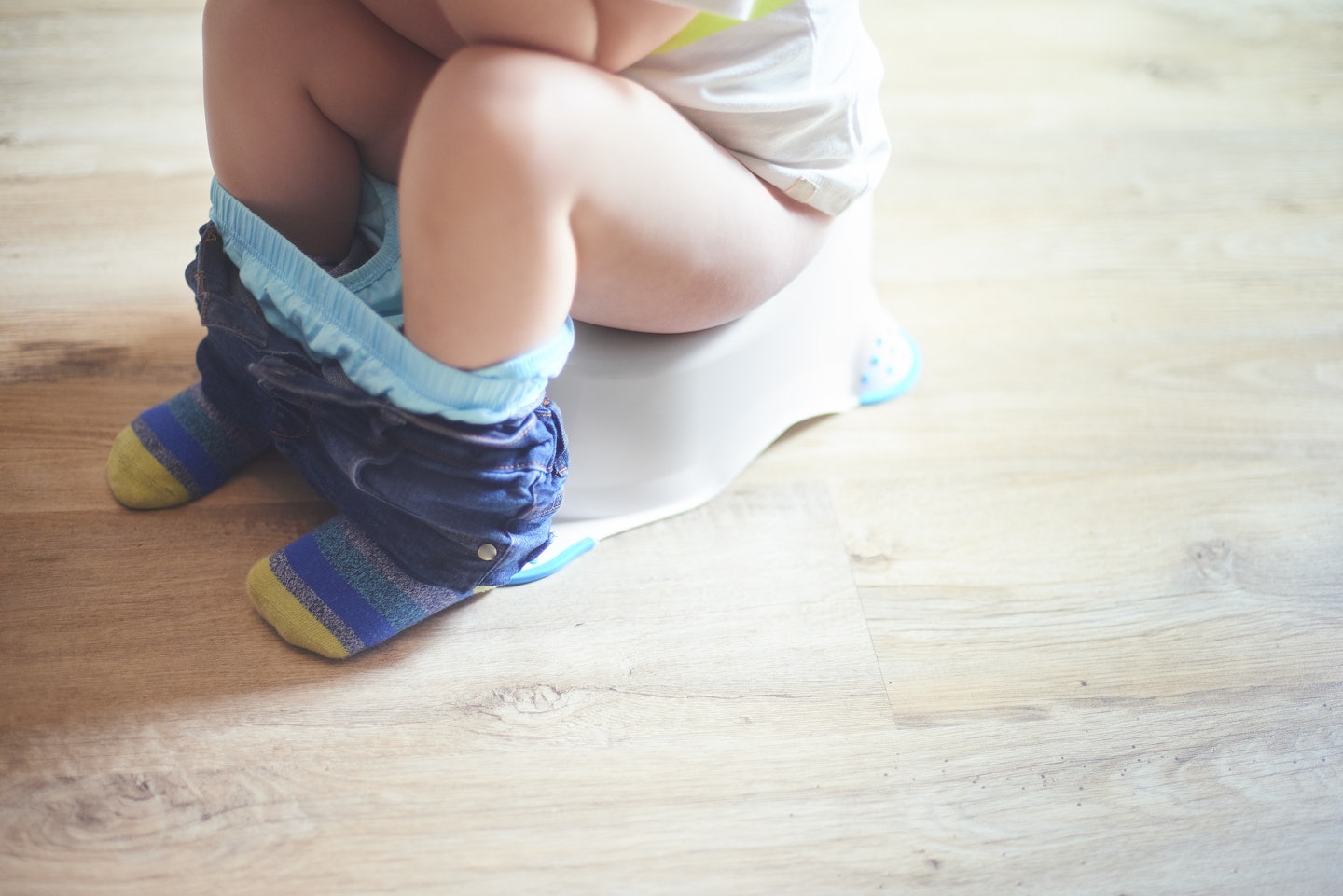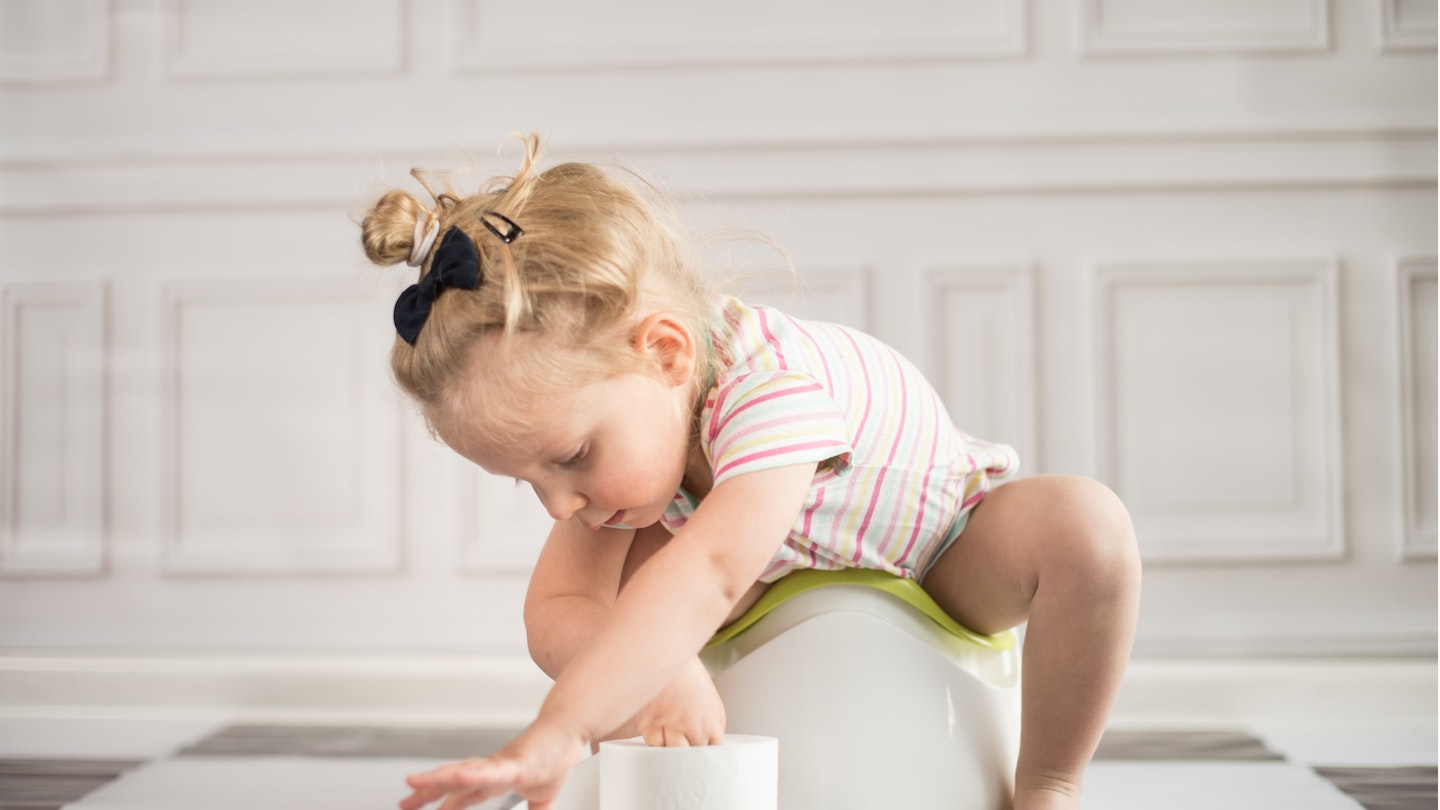We've all heard of the 3 day potty training method, but does it really work? And is it really achievable to train your tot in just 3 days?
Potty trainingis a major milestone for your little one, and an important step on her road to becoming more independent. But that road can be a rocky one for parents!
While we’re sure you won’t be sad to say goodbye to nappies, getting your child to be consistently dry during the day can be a challenge. However, it can be conquered in just 3 days by following the steps below.
There's no right or wrong time for your little one to ditch the nappies, but there are a number of tell tale signs that your tot is ready to use the potty or toilet and get in those big boy or girl pants.
-
Take a look at the best potty training pants you can buy.
How to know your child is ready for potty training

According to Sarah Ockwell-Smith, mum-of-four and author of The Gentle Potty Training Book, you might not be able to see the signs, but there are some important physical changes that influence when your child is ready to potty-train…
1) Bigger bladder
The size of your youngster’s bladder grows quickly, and capacity trebles from birth to age two, when it can hold 200ml. Which is pretty big, considering the full adult capacity is around 455ml. And to be able to do fewer, bigger wees, that capacity is vital. From two years on, growth is slower, adding just another 27ml by age four.
2) Muscle control
Children only develop the ability to voluntarily open and close their sphincters, the specific muscular structures needed to control wee and poo release, once the messages are sent correctly to and from their brain. This voluntary control takes time to develop, as her brain makes new connections as she grows.
3) Maturing body clock
All these signs show that your youngster is ready for daytime potty-training. But you’ll need to keep the nighttime nappies on for now, while you wait for her body clock to mature. At night, we secrete a hormone called ADH, which helps to reduce urination so we may sleep uninterrupted. But this day/night pattern doesn’t mature until a child is around three years old.
4) Muscle co-ordination
Babies wee frequently, in small amounts. And around a third of babies do something known as ‘interrupted voiding’, when they don’t fully empty their bladder when they wee, so there are lots of smaller wees rather than one big one. This is thought to be due to a lack of muscle co-ordination and communication between the brain and bladder muscles. By the time she’s a toddler, this incoordination disappears, so she’s able to do fewer, bigger wees.
Things to remember before you begin 3-day potty training
-
It's a good idea to block out three days for this (maybe on a long weekend). If you can't spend three days solid potty training make sure your child care provider is aware of what to do and how to help with the potty training on the third day.
-
You'll want to spend these three days at home so avoid going out anywhere during these three days and give your little one your undivided attention during the potty training process.
-
Beforehand, your child will need to choose some grown-up pants of their own so it might be a nice idea to take them shopping and allow them to choose their own. This will also get them very excited about wearing them! It's also a good idea to let them choose their own potty!
-
Have a talk with them a few days before to let them know that they'll soon be saying bye-bye to their nappies so they know what to expect.
Day 1
Author of Potty Training Magic, Amanda Jenner, says it's important to let your little one lead the way on the first day. ‘Take her nappy off while she is still in her
bedroom and get her to throw it away,’ says Amanda.
Get her to choose a pair of her new big girl pants to wear that day making sure you explain that nappies are now only for bedtime. Make sure you sit her on the potty every 20 to 35 minutes and be sure to offer a reward each time. 'Ask ‘Shall we try and get a star or a sticker?’ every time they try to use the potty.'
‘Use lots of lovely reinforcing language and, if she asks to go back to nappies, tell her that you haven’t got any more for daytime,’ says Amanda.
-
Read more about the best reusable nappies for your baby.
Day 2
On the second day of potty training, try to encourage your toddler to take more of a lead and become more independent with things like putting her pants on herself and showing you where the potty is.
'It's also a good idea to regularly remind her what to do, saying things like “Don’t forget to tell Mummy when you need a wee or a poo."' Says Amanda.
You might also notice that on day two your toddler has lost interest and might even refuse to use the potty altogether.
-
Here are some of the best potty training books for you and your little one.
'Distraction is key, so put together a box of toys and activities your child can have fun with while on the potty. Blowing bubbles is ideal as it will help relax your child, in turn relaxing her bladder and bowel, too! 'Don’t be tempted to just put her in front of the TV – instead, give her something to do, like a simple jigsaw.'
Be prepared for accidents to happen on the second day - it's very common so don't be disheartened. Amanda says: ‘If she has an accident, stay upbeat and say “Wee doesn’t go there”. Change her pants and say: “You don’t get a sticker this time, but try again.” Stay very positive and calm, and never get cross.’
-
Read some more top expert tips on regression in potty training.
It might also be a good idea on day two to introduce some hygiene with flashcards showing pictures of children using potties and washing their hands. Talk to your little one about the cards and get her to tell you what she can see. And take time to relax yourself, especially once your little one has gone to bed. If you get stressed, your toddler will pick up on it, so plan something fun to take your mind off toilet training.
Day 3
On day three, it's normal for your toddler to start becoming more aware of their bodily functions and they may even begin to feel embarrassed about going to the loo in front of you. This is a huge step and it's important to respect their privacy says Amanda.
‘Don’t stick the potty in a room full of people and make a spectacle of her. If your child prefers to go somewhere private such as behind the sofa to do a poo, put the potty there and tell her to call you when she has finished.’
-
Take a look at the best potty training charts to motivate your little one.
Although your toddler might feel embarrassed about family members knowing about the potty, it's important to get family members to get on board by asking how many stars she has got. Or even have Grandma phone up and talk positively about potty training. And if your child goes to nursery or a childminder, make sure they know you are potty training and request that they follow the same approach. ‘Ask if you can send in a bag of stars for them to give out to your child,’ suggests Amanda, or if they can tell you at the end of the day how many stars your child has earned, so she can add them to her box when she gets home.’
Over the next few days, you might want to become a little more sparing with the stickers, only giving them out when your tot has taken herself to the potty. ‘If she starts going on her own without prompting, say “Well done, I am proud of you”,’ says Amanda.
Don’t worry if your tot still has the odd accident, as it is still very early days. It’s common for toddlers to be reluctant initially to use their potty for bowel movements – but stick with it. Amanda adds: ‘If she does a poo in her pants, get her to put it into the potty and then flush it away. Keep showing her the right place for her poo to go. If she insists she wants to do her poo in a pull-up, take it straight off as soon as she has finished and put her back into her proper pants.’
Do's and Don'ts of potty training

Do
-
Give your child plenty to drink. If she isn’t drinking lots of fluids, she won’t be able to practise her potty-training skills, and there’s a risk she might become constipated.
-
Get her a stable toilet seat if your child isn’t keen on the potty. Some little ones prefer using the toilet right from the start, especially for poos.
-
Only give your child water, milk or sugar-free juice to drink. Sugary drink and fizzy pop are diuretics and stimulate urine production, making accidents more likely.
-
Stop and try again later if your child isn’t ready. If she is still having a lot of accidents every day after a week, give her a break and revisit potty training again in a few weeks’ time.
-
Let your toddler lead the way. Every child is different, so don’t compare your toddler to others, and don’t potty train because other people are telling you to do it.
-
Teach your little boy to wee sitting down first. There’ll be plenty of time to teach him to wee standing up once he has successfully mastered the potty.
Don't
-
Be tempted to make your little one sit on the potty for ages in case she needs to go. Encourage her to recognise her own cues, and prompt her to try regularly for just a few minutes each time.
-
Start potty training when you have just moved house, had a new baby, or your child has been ill or started at nursery. Wait a few weeks for everything to settle before introducing another big change.
